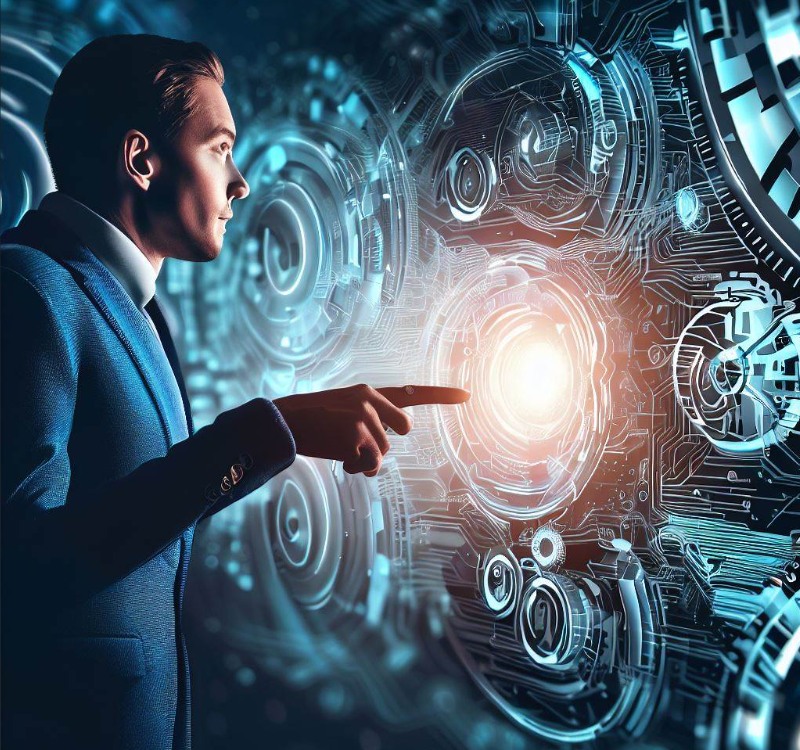
In the rapidly evolving landscape of the 21st century, artificial intelligence (AI) stands as a revolutionary force poised to transform the global economy and redefine the nature of work. As AI technologies, including programs like ChatGPT, become increasingly sophisticated, businesses and workers must adapt to the changes they bring to remain competitive. However, understanding the full scope of AI’s impact on jobs and the economy is a complex task that requires a multifaceted approach. This article will delve into recent research on AI and robotics’ impact on the workplace, discuss the potential effects on businesses and jobs over the next 5-10 years, and provide recommendations on how to adapt to these changes, including the value of obtaining an AI prompting certification through this AI Prompting Course.
Measuring the Impact of AI and Robotics
A comprehensive examination of AI and robotics’ impact on the workplace can be found in the recent study by Mila Staneva and Stuart Elliott, “Measuring the Impact of Artificial Intelligence and Robotics on the Workplace,” available here. The authors provide a literature review of studies that aim to measure the extent to which AI and robotics can automate work. They present five assessment approaches and discuss their strengths and weaknesses, ultimately formulating recommendations for future work.
The study underscores the importance of understanding AI and robotics’ capabilities and limitations in relation to human skills to accurately assess the work tasks these technologies can overtake from humans and the extent to which they can automate jobs in the future. While there is a consensus that AI will transform the economy, the direction of this transformation is still unclear. AI and robotics may lead to technological unemployment by replacing workers, or they may complement and augment workers’ capabilities, thereby raising productivity, creating new jobs, and boosting new demand for labor.
Automation, AI, and the Human Workforce
Another important piece of research that delves into the relationship between automation and the human workforce can be found here. This thesis explores how automation has been utilized by corporations to handle menial tasks in various fields, from assembly to transportation, and examines the challenges that advances in artificial intelligence, hardware, and robotics bring to employing the lower class of workers. The author discusses the necessity for modern workers and entrepreneurs to accept the possibility of complete replacement or radical task augmentation through the influence of artificial intelligence.
The thesis concludes that a reformed system of education must be considered to prevent the general population from being alienated by the rising technical boundaries of work. It also recommends that newer workers and entrepreneurs recognize that AI cannot completely replace human qualities for decision-making behavior. Automation and AI remain tools to amplify human actions and make room for more specialized and creative parts of work.
The Non-Linear Relationship Between AI and Unemployment
An additional study that is crucial in understanding the impact of AI on the workforce is one that examines the possible effects of artificial intelligence on unemployment. The study, available here, uses a broad database of AI-related patents in 40 developed and emerging markets from 2000 to 2019. It employs a panel smooth transition regression (PSTR) model to analyze the relationship between artificial intelligence and unemployment under various inflation levels.
The study finds a non-linear relationship between artificial intelligence and unemployment, depending on the threshold of inflation. Specifically, artificial intelligence increases unemployment until a certain inflation threshold is attained, after which the effect reduces. This finding contributes to the existing literature by confirming that the impact of AI on unemployment is not straightforward and varies amongst countries over time. This highlights the importance of considering the economic context when assessing the impact of AI on employment.
Adapting to Change
To navigate the changes brought about by AI and automation, it is crucial for businesses and professionals to proactively adapt. One way to do this is by obtaining an AI prompting certification, such as the one offered in this AI Prompting Course. This course equips individuals with the necessary skills and knowledge to navigate the changes brought about by AI and automation. Additionally, recognizing that AI cannot completely replace human qualities for decision-making behavior is essential. Automation and AI should be viewed as tools to amplify human actions and make room for more specialized and creative parts of work.
- SEO Powered Content & PR Distribution. Get Amplified Today.
- PlatoData.Network Vertical Generative Ai. Empower Yourself. Access Here.
- PlatoAiStream. Web3 Intelligence. Knowledge Amplified. Access Here.
- PlatoESG. Automotive / EVs, Carbon, CleanTech, Energy, Environment, Solar, Waste Management. Access Here.
- PlatoHealth. Biotech and Clinical Trials Intelligence. Access Here.
- ChartPrime. Elevate your Trading Game with ChartPrime. Access Here.
- BlockOffsets. Modernizing Environmental Offset Ownership. Access Here.
- Source: Plato Data Intelligence.



